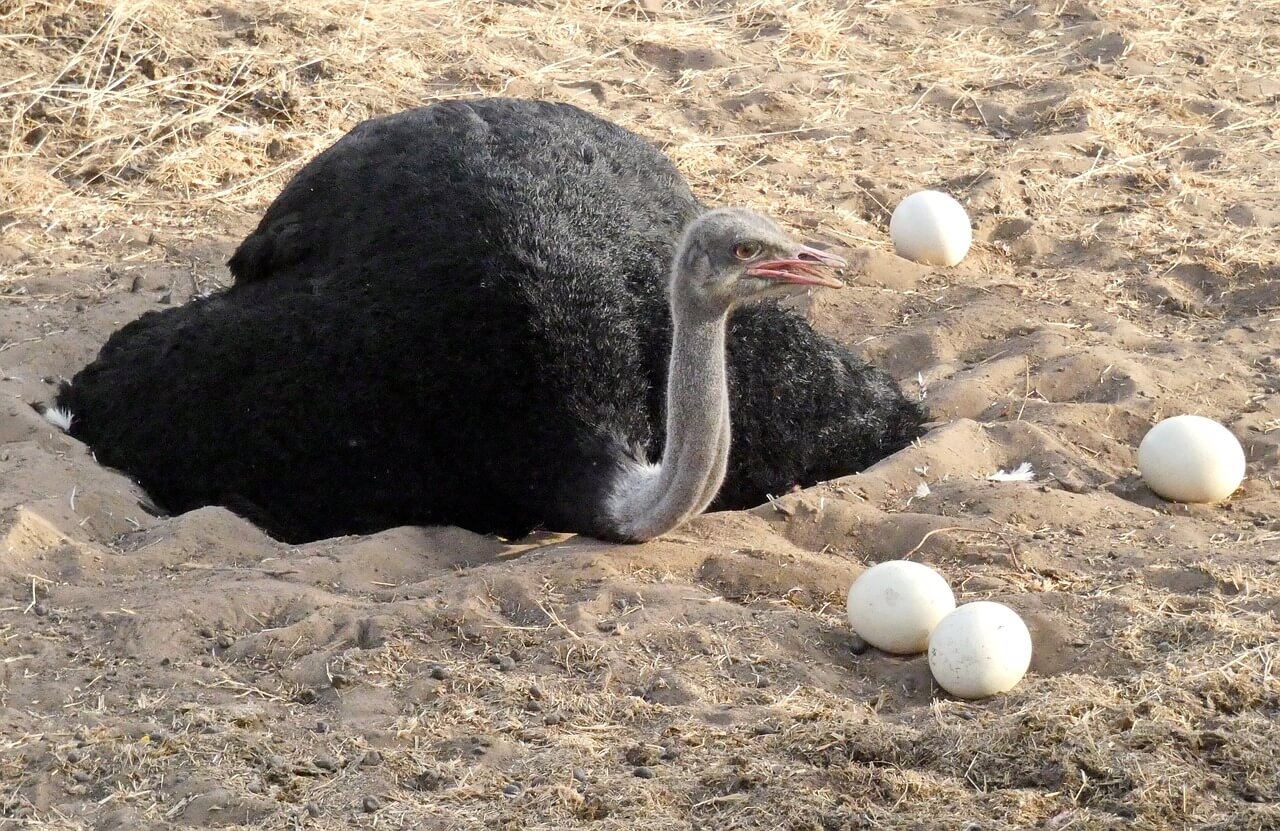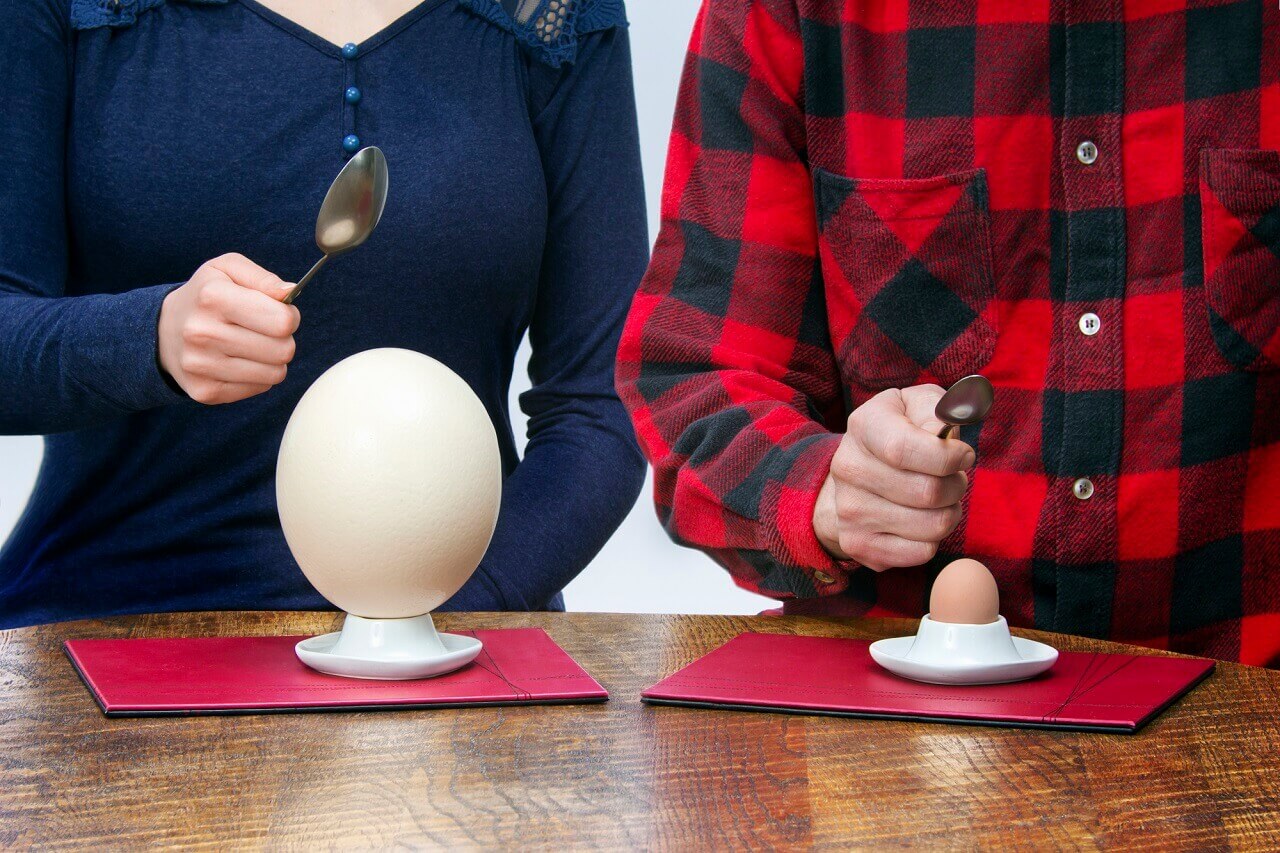Ostrich eggs are delicious, exotic treats that can be prepared in several ways. Regardless of the method you choose when it comes to understanding how to cook an ostrich egg, know that these protein-packed picks are filled with nutrients like omega-3 fatty acids, selenium, zinc, and more.
What You'll Learn Today
Ostrich Egg Basics

Ostrich eggs are large, with a single egg weighing several pounds. Eating one ostrich egg is about the equivalent of two dozen chicken eggs! While the egg, per volume, contains less vitamin E and vitamin A than a chicken egg, it has a lot more other nutrients, such as magnesium and iron.
Just one ostrich egg contains 2000 calories and tons of other beneficial nutrients, like fat and protein. They’re high in manganese, zinc, and more. They’re lower in sodium than chicken eggs, too.
Ostrich eggs are incredibly nutrient-dense, which is why many athletes, in particular, are turning to them as a primary source of nutrition.
That said, there are some extra steps involved in cooking them.
How Would You Cook an Ostrich Egg?
If you’re lucky enough to get your hands on an ostrich egg, follow these tips to cook it to perfection.
Where to Find an Ostrich Egg
Learning how to cook an ostrich egg is not that complicated – but finding one? That’s a whole other story!
You can often find ostrich eggs for sale online (though don’t look on Amazon – you aren’t going to find these eggs for sale in all of your typical old shopping haunts).
Instead, turn to specialty retailers like the Exotic Meat Markets. Here, you can find ostrich eggs for sale at around $50 to $100 apiece (yikes!). Needless to say, this isn’t something you’ll be eating for breakfast every day of the week.
You might also want to see if you have an ostrich farm nearby. There are several in the United States, Canada, Australia, and the UK, along with various countries in Africa, of course.
How to Open an Ostrich Egg
Each ostrich egg weighs up to three pounds and is about six inches in diameter, so you’re probably not going to crack it against the side of a bowl to open it like you would with a chicken egg.
Instead, you’re going to need a chisel and a hammer.
Here’s a video that will show you exactly how to crack an ostrich egg open without hurting yourself or damaging the egg inside:
Can You Boil an Ostrich Egg?
There are several ways you can cook an ostrich egg, but without a doubt, boiling it is the most popular (and perhaps easiest) way to do so.
After boiling your ostrich egg, you can use a chisel and hammer to crack the shell open. Then you can enjoy the yoke with your family and friends! Again, this definitely isn’t a meal you’ll want to tackle by yourself!
How Long Do You Boil An Ostrich Egg?
That depends on how hard or soft you want your ostrich egg to be.
If you would prefer it to be on the softer side, then you will want to boil it for 90 minutes.
If you’d rather eat a harder ostrich egg, an hour is all that it will take.
Other Methods of Cooking an Ostrich Egg
There are other ways you can cook up your ostrich eggs, too.
Frying Ostrich Eggs
One of the best ways is to fry it. There are, however, some culinary experts who advise against cooking an ostrich egg in this way.
That’s because there’s so much volume to an ostrich egg, it will take several pans to contain the yolk and whites of just one egg. It can certainly be done – but you’ll need lots of space to do so.
If you decide to fry the ostrich egg, you will need about 25 minutes to fully cook a sunny-side-up egg. The biggest challenge, besides space, when cooking a fried ostrich egg is in keeping the yolk intact.
You will want to use a knife to crack open the egg and just tap the top portion to coax the entire egg out, rather than using a hammer. This is a gentler technique that will help you preserve the entire egg.
Otherwise, fry up the egg just as you would a chicken or duck egg, using the cooking oil and seasonings of your choosing.
Scrambling Ostrich Eggs
Scrambling your ostrich eggs is another way to do so. It’s equally as challenging as the frying technique in regards to the real estate aspect – you need a lot of pans to cook just one ostrich egg!
However, it’s easier in that you can make more of a jumbled mess with the mixture and still call it a purposeful scrambled egg.
It’s also a bit easier logistically because you don’t have to crack the entire egg open. You can make just a tiny hole in the egg to coax out the liquid since you don’t have to worry about keeping the yolk intact.
Plus, you can then save the shell for serving later on – a cool idea that’s sure to charm your houseguests.
You can even make an ostrich egg custard or omelet! If you decide to make an omelet, you’ll cook the eggs just as you would with a scramble, but of course add things like cheese, vegetables, and meats.
What Does an Ostrich Egg Taste Like?

Now, the answer to the question we’ve all been waiting for – what exactly does an ostrich egg taste like?
With its enormous size, lots of people wonder whether eating an ostrich egg would actually be worth it. Isn’t it tough or chewy?
That’s not the case.
Ostrich eggs taste much like chicken eggs but they tend to be a bit sweeter and buttery. The flavor is more intense, too, something you just won’t find with other types of eggs.
When you scramble an ostrich egg, it becomes a bit more gelatin in nature while it is more solid than a chicken egg when boiled. The longer you boil your ostrich egg, the more it will resemble a chicken egg in flavor and texture.
So there you have it! Everything you need to know about how to cook ostrich eggs and more importantly, what ostrich eggs taste like. Fodder for your next dinner party, perhaps? We think so! If you’re looking for more information on ostrich farming, check out this guide.